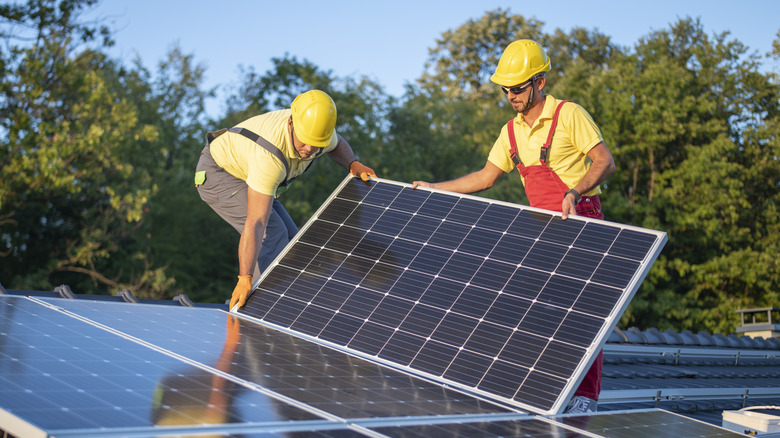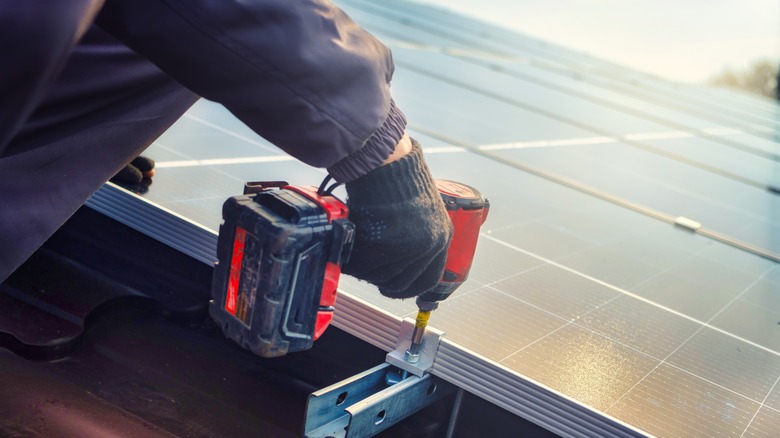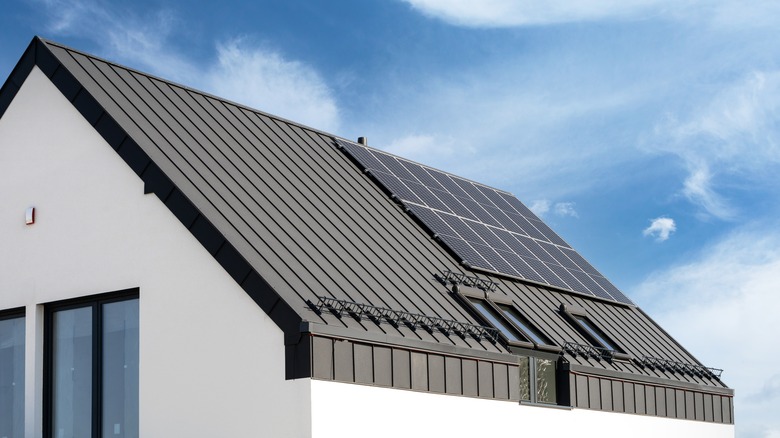What To Know Before Installing Solar Panels On A Metal Roof
Anyone who has ever sat on a metal slide in the middle of summer as a kid can agree that the light of the sun makes metal exceptionally hot. The various metal surfaces that make up a piece of property absorb an impressive amount of heat during the sunny season. Rather than letting that heat turn everything into a sweltering hotbox, you could put it to a better purpose: powering your home with a set of solar panels, or at least a portion of your home, depending on how many panels you can fit.
Just like with a regular tile roof, it's more than possible to install solar panels on a metal roof, be it a standing seam metal roof or a corrugated metal roof. That said, while it's perfectly fine to install solar panels onto metal surfaces, there are a few crucial differences between doing so there and on a tile roof that you should be aware of. After all, it's these differences that could determine the safety and longevity of your installed panels.
Installation factors
Solar panels can be safely installed on most kinds of metal roofs, including copper, steel, and aluminum. However, before you go slapping a set of panels onto the roof and calling it a day, there are a few factors you need to consider and precautions you need to take.
First and foremost, you need the right kind of mounting system. Depending on the kind of metal roof you have and its overall condition, you'll need to use different means of mounting the panels to the roof. You can't do this the same way you would with a tile roof or the panels would fall off. For instance, if you have a standing seam roof that's had some time to settle onto your house, you can use a set of simple clamps to attach the panels without making holes in the roof. On the flipside, if your roof is corrugated, you'll need a special mount designed to attach directly to the roof's ribs. In either case, you'll want a mount with a degree of flexibility so the panels can be tilted toward the sun.
Additionally, before you do any mounting, you should have your roof professionally evaluated to determine its total safe load capacity. Strong as metal is, it can only hold so much weight before the structural integrity of your house is compromised. Make sure the panels you get are lighter than the max weight, assuming your roof can even support them.
Upsides and downsides
Compared to installing solar panels on a tile roof, installing on a metal roof does provide several unique benefits. For one thing, metal roofs are generally more resilient than tile ones, which have to be regularly reshingled. During a reshingling, you'd have to uninstall your solar panels and then reinstall them afterward, which is obviously annoying. With a metal roof, as long as it's structurally fine, the panels can stay right where they are for years on end, requiring less stringent upkeep beyond the usual cleaning and checking. Additionally, since metal roofs reflect a portion of sunlight, you don't have to worry as much about heat getting trapped around the panels and damaging them.
However, while both metal roofs and solar panels are more heat-resistant than they used to be, heat can still cause them to expand and contract when exposed to intense temperatures. When you're having your panels installed, you'll need expert appraisal to ensure the installation takes this potential sizing change into account or else the whole system could fall apart on a hot day. Due to the amount of technical knowledge and skill that goes into installing panels on metal roofs compared to tile, the process can be a bit more expensive than usual. It's not as prohibitively expensive as some solar myths claim — just make sure it's an investment you're prepared to make.


